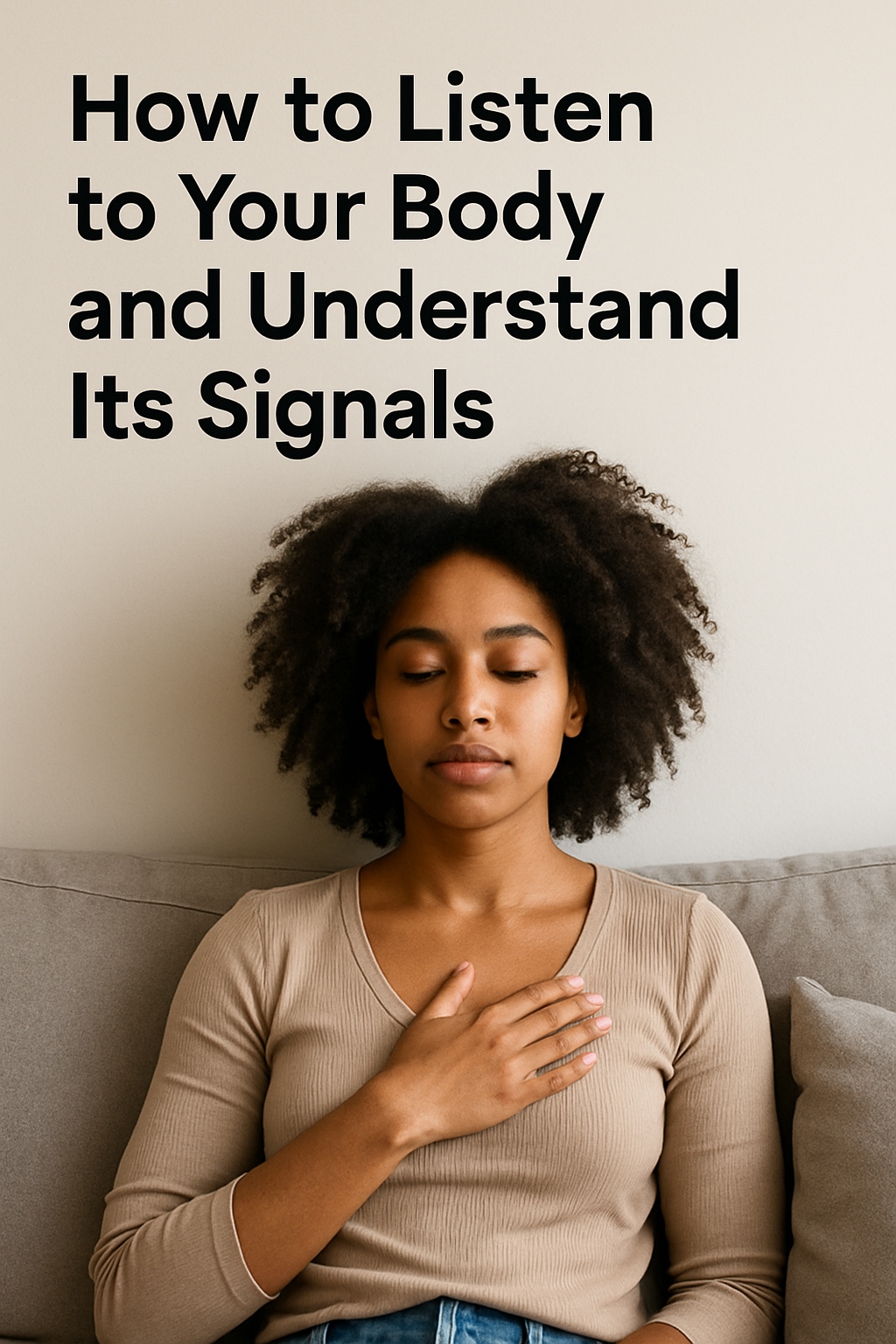Your body is constantly communicating with you. Through subtle cues and sensations, it lets you know what it needs, what’s out of balance, and how to return to a state of well-being. But in the rush of daily life, many people learn to ignore or override these messages.
Learning to listen to your body is one of the most powerful acts of self-care. It allows you to respond with kindness instead of control—and to build a stronger connection with yourself, one moment at a time.
Why Body Awareness Matters
Your body holds more than just physical information. It reflects your emotions, energy levels, stress load, and inner rhythms. Ignoring its signals can lead to burnout, fatigue, anxiety, or even illness.
When you learn to pay attention, you can make choices that support your real needs instead of pushing through with willpower alone.
Common Signals and What They Might Mean
Hunger or cravings may be physical, emotional, or related to energy imbalances.
Fatigue often signals the need for rest, better sleep, or less mental overload.
Tension in the shoulders, jaw, or stomach can reflect stress, fear, or emotional buildup.
Digestive discomfort might point to emotional stress or a mismatch in food choices.
Headaches or foggy thinking may come from dehydration, screen time, or emotional strain.
Irritability or restlessness could signal unmet emotional needs, lack of movement, or overstimulation.
These are not diagnoses—they’re invitations to explore. Every body is different. The more you observe your patterns, the more clearly you’ll understand your own signals.
Start by Slowing Down
You can’t hear subtle messages in a state of rush or distraction. Slow down your pace—physically and mentally.
Take a few deep breaths. Ask yourself: “What am I feeling right now?” and “What do I need?”
Pause before meals, after meetings, or when switching tasks. Tune in to sensations like tension, lightness, hunger, or heaviness.
Small check-ins throughout the day help you reconnect.
Use a Body Scan Practice
A body scan is a simple technique to bring awareness to how you feel. Sit or lie down. Close your eyes if it feels safe.
Bring your attention to each area of the body, starting at your feet and moving upward. Notice any sensation—tightness, warmth, pain, tingling, or even nothing at all. You don’t need to fix anything. Just observe.
This helps train your awareness and builds your emotional connection to your body.
Notice How Your Body Responds to Choices
How do you feel after eating certain foods? After spending time with certain people? After working long hours? Your body responds to everything—physically and energetically.
Start keeping a journal of how different experiences affect your energy, mood, and physical sensations. This gives you clues about what supports your well-being—and what drains it.
Respect the Answers You Receive
Once you begin to understand your body’s language, the next step is to honor it. If you’re tired, rest. If you’re hungry, eat nourishing food. If you feel tension, pause or stretch. If you’re sad, let yourself feel without judgment.
Listening only works if you trust what you hear.
When You Feel Disconnected
If it’s been a long time since you felt “at home” in your body, be patient. Reconnection takes time. Start with one small moment per day—a breath, a stretch, a sip of water done with full presence.
Over time, the signals become clearer, and your sense of trust grows stronger.
Final Thoughts: Your Body Is Not the Enemy
Your body isn’t something to control or fix. It’s a source of wisdom, always doing its best to support you. The more you listen with curiosity and care, the more empowered you’ll feel to meet your needs before they become crises.
You don’t need to master this overnight. Just start by listening. One breath, one message, one choice at a time.

